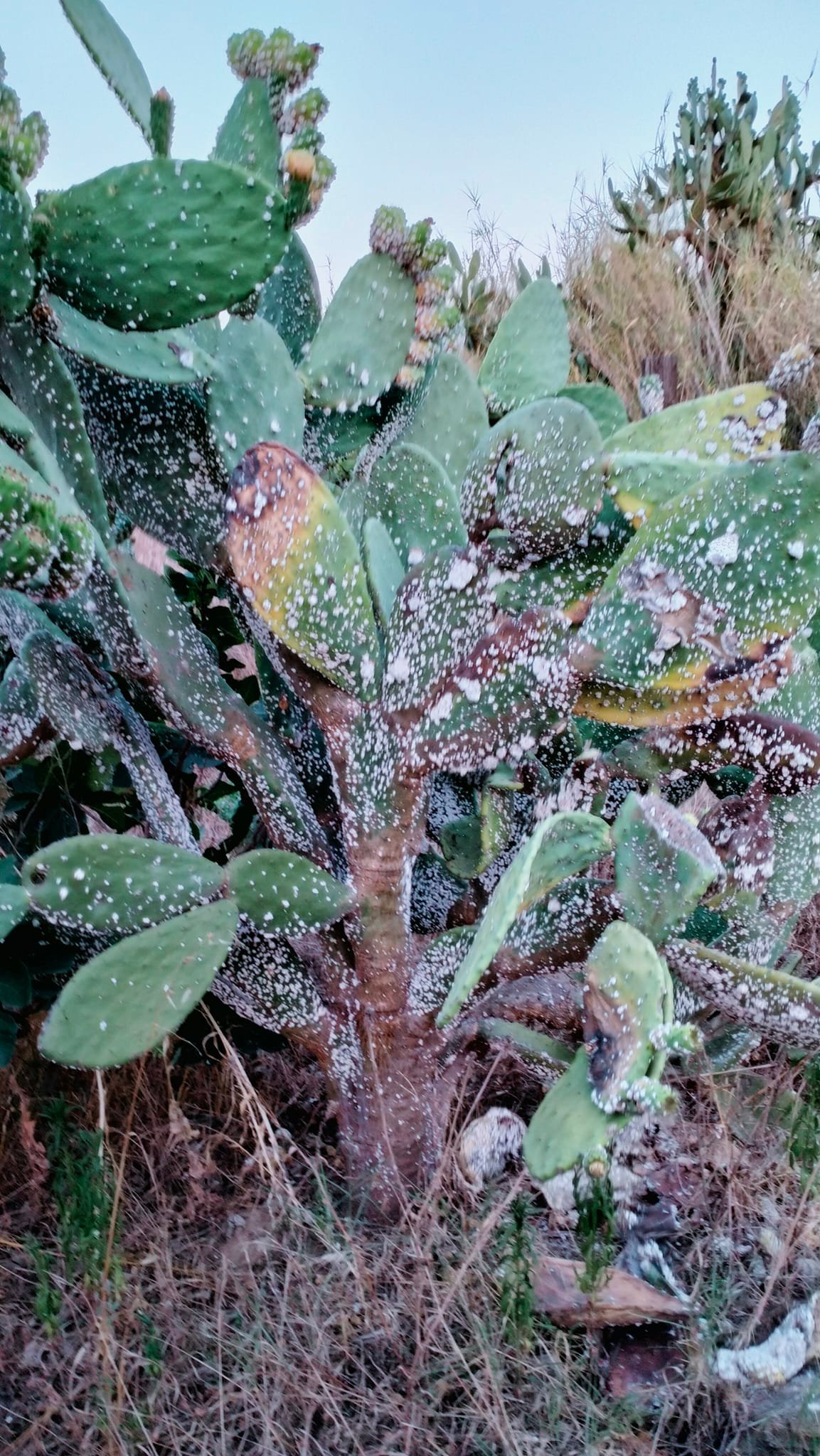
Newsroom
A tiny insect threatens to wipe out prickly pear cacti in Cyprus within a few years, potentially depriving the island of a summer fruit deeply rooted in Cypriot culture.
For years, Cyprus has faced a serious environmental and agricultural crisis: prickly pear cacti, the plants that produce the beloved fruit, are being destroyed by the insect Dactylopius opuntiae, also known as the prickly pear cochineal. The pest, first detected in the Famagusta district in 2016, has now spread across most of the island’s accessible areas. Within two to three years of infestation, the plants typically die.
This year, images from Larnaca, Famagusta, and Nicosia show dried, pale trunks and leaves stripped of fruit by the insect. Experts warn that without immediate action, Cyprus could be without prickly pears for 15 to 20 years.
The destruction extends beyond the loss of a characteristic Cypriot fruit. Bees, birds, and reptiles that rely on the plants for food and moisture are also affected. Small producers and rural communities face economic losses, as prickly pears provide an important source of income during the summer months.
Although the threat has been known for nearly a decade, responses have been fragmented and insufficient. Scientists and agricultural authorities now recommend a combination of measures: uprooting and destroying infected plants, creating protected zones, establishing genetic material banks, using European funds, and implementing biological control methods with natural predators.
The fight is challenging but essential. Prickly pears are more than a seasonal fruit, they are part of Cyprus’ landscape, identity, and collective memory. Losing them would mean losing a living symbol of the island’s summer.
Prickly pear production has already declined, pushing market prices up. Some supermarkets now sell cleaned prickly pears for €13.50 per kilogram.
































